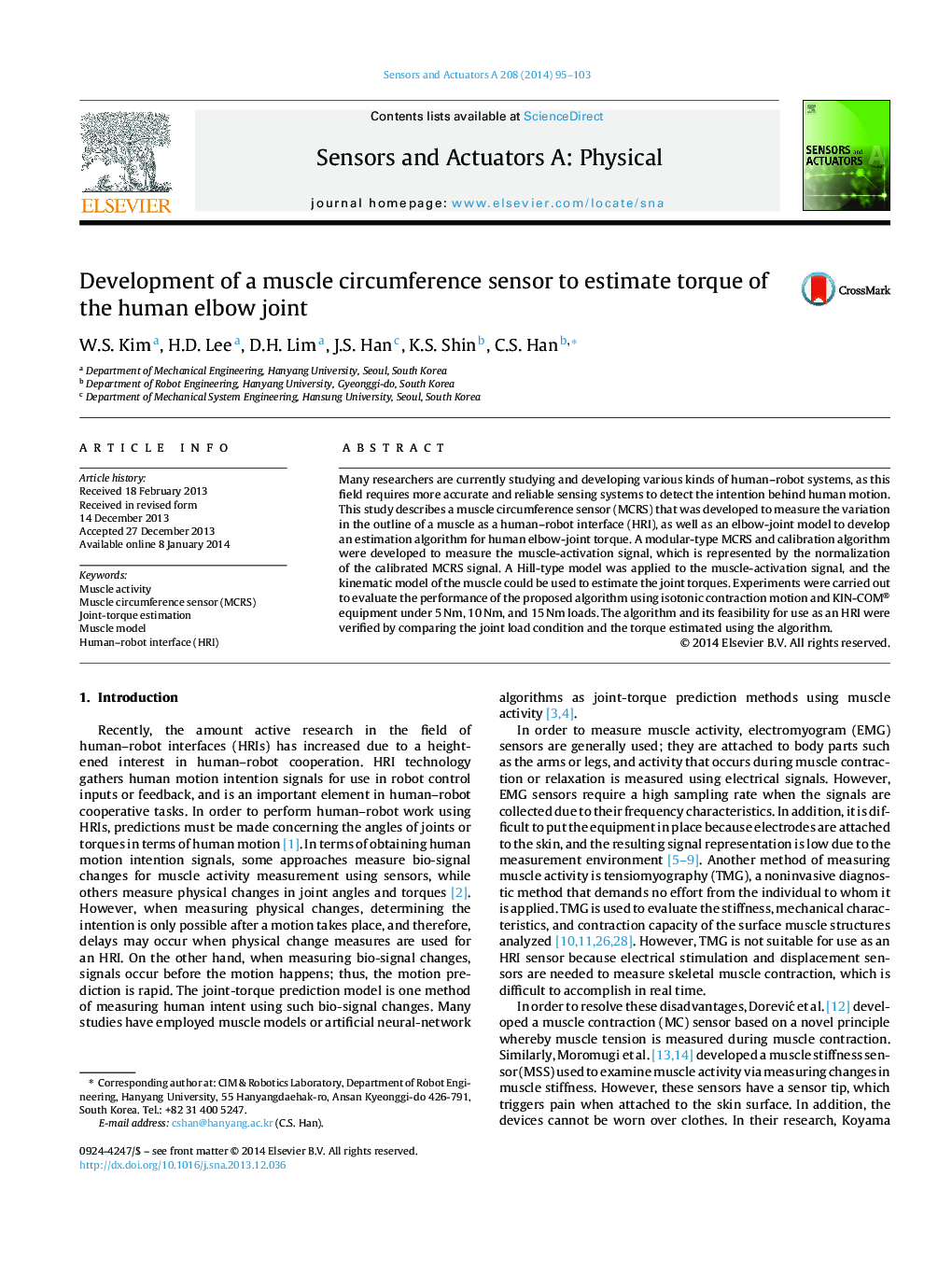| Article ID | Journal | Published Year | Pages | File Type |
|---|---|---|---|---|
| 739436 | Sensors and Actuators A: Physical | 2014 | 9 Pages |
•We developed an muscle circumference sensor (MCRS) for use as a human–robot interface (HRI).•The MCRS calibration algorithm and muscle model are developed to estimate the elbow joint torque.•External load increased by 5 Nm, muscle activity increased by approximately 0.17 through the calibration algorithm.•The maximum joint torque derived through the torque estimation algorithm which was similar to the joint load conditions.
Many researchers are currently studying and developing various kinds of human–robot systems, as this field requires more accurate and reliable sensing systems to detect the intention behind human motion. This study describes a muscle circumference sensor (MCRS) that was developed to measure the variation in the outline of a muscle as a human–robot interface (HRI), as well as an elbow-joint model to develop an estimation algorithm for human elbow-joint torque. A modular-type MCRS and calibration algorithm were developed to measure the muscle-activation signal, which is represented by the normalization of the calibrated MCRS signal. A Hill-type model was applied to the muscle-activation signal, and the kinematic model of the muscle could be used to estimate the joint torques. Experiments were carried out to evaluate the performance of the proposed algorithm using isotonic contraction motion and KIN-COM® equipment under 5 Nm, 10 Nm, and 15 Nm loads. The algorithm and its feasibility for use as an HRI were verified by comparing the joint load condition and the torque estimated using the algorithm.
